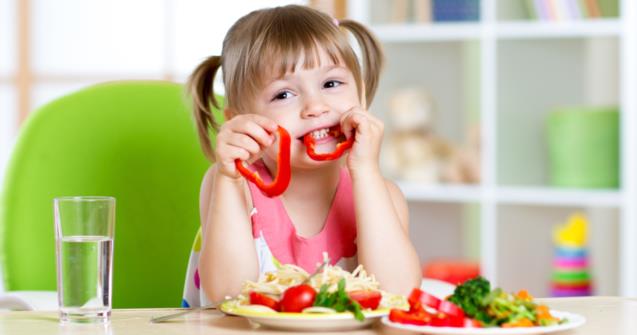
How young children use their sense of touch to explore food
How many times have you heard an adult tell a child to not “play with his food”? In fact, letting a young child manipulate and play with his food with his fingers can represent a wonderful learning experience.
For starters, let me remind you that infants explore their environment through their five senses. For example, they will enjoy:
- Touching different textures.
- Looking at and discovering colors.
- Listening to a cookie crackle between their teeth.
- Smelling their food.
- Tasting their food.
In this article, I would like to share ways children can explore the textures associated with different types of foods.
A messy story
An early childhood educator gives a 12-month-old a bowl of applesauce. The child, who we will call Sophia, grasps her spoon sideways in her hand. She plunges one finger and then a second finger in the applesauce. She seems surprised. Her early childhood educator had deposited apple chunks in the bottom of her bowl. The applesauce is lukewarm. Her early childhood educator describes the different textures and states that the applesauce is smooth, that the apple chunks are hard, and that the applesauce is lukewarm. Sophia grabs a handful of applesauce and spreads it on her high chair tray like paint. This makes it possible for her to see the contents of her snack. She tries to squish the apple chunks on her tray. Her early childhood educator explains that the apples are difficult to squish because they are hard. She then adds banana pieces and informs Sophia that bananas are easier to squish since they are soft. As she explores, Sophia eats the applesauce and fruit pieces.
Adequate interventions
The early childhood educator lets Sophia explore her food. She does not tell her how to eat her applesauce. She supports Sophia’s learning experience by describing each of her discoveries.
The early childhood educator avoids reprimanding Sophia about the way she chooses to explore her food. She doesn’t tell her that she is being messy or that her high chair tray is dirty. She does not make her use her spoon, but it is deposited nearby and available. She understands that Sophia is learning.
At the end of snack time, the early childhood educator will wash Sophia’s high chair tray with soap and water, so she can spread food on it again at lunch or snack time.
Limiting cleanup efforts
I know some of you may be thinking that this method is just too messy and demanding because you don’t have time to clean up large messes after every meal or snack, especially if you work in a nursery or have many very young children in your group. There is no need to give children a very large quantity of a food item. A spoonful in a bowl is all they need to explore and learn. You can even set foods directly on their high chair tray. Just be sure to feed them the remaining quantity to make sure they get all the vitamins and nutrients they need. With practice, children will eventually be able to feed themselves with a spoon.
Chantal Millette
Early childhood educator

 Home
Home Theme activities
Theme activities
 Babies and toddlers
Babies and toddlers
 Arts and crafts
Arts and crafts
 Science
Science
 Creative recipes
Creative recipes
 Tips and tricks
Tips and tricks
 Special needs
Special needs
 Extra activities
Extra activities
 Educ-TV
Educ-TV
 Newsletter
Newsletter  Online store
Online store Educatall club
Educatall club

